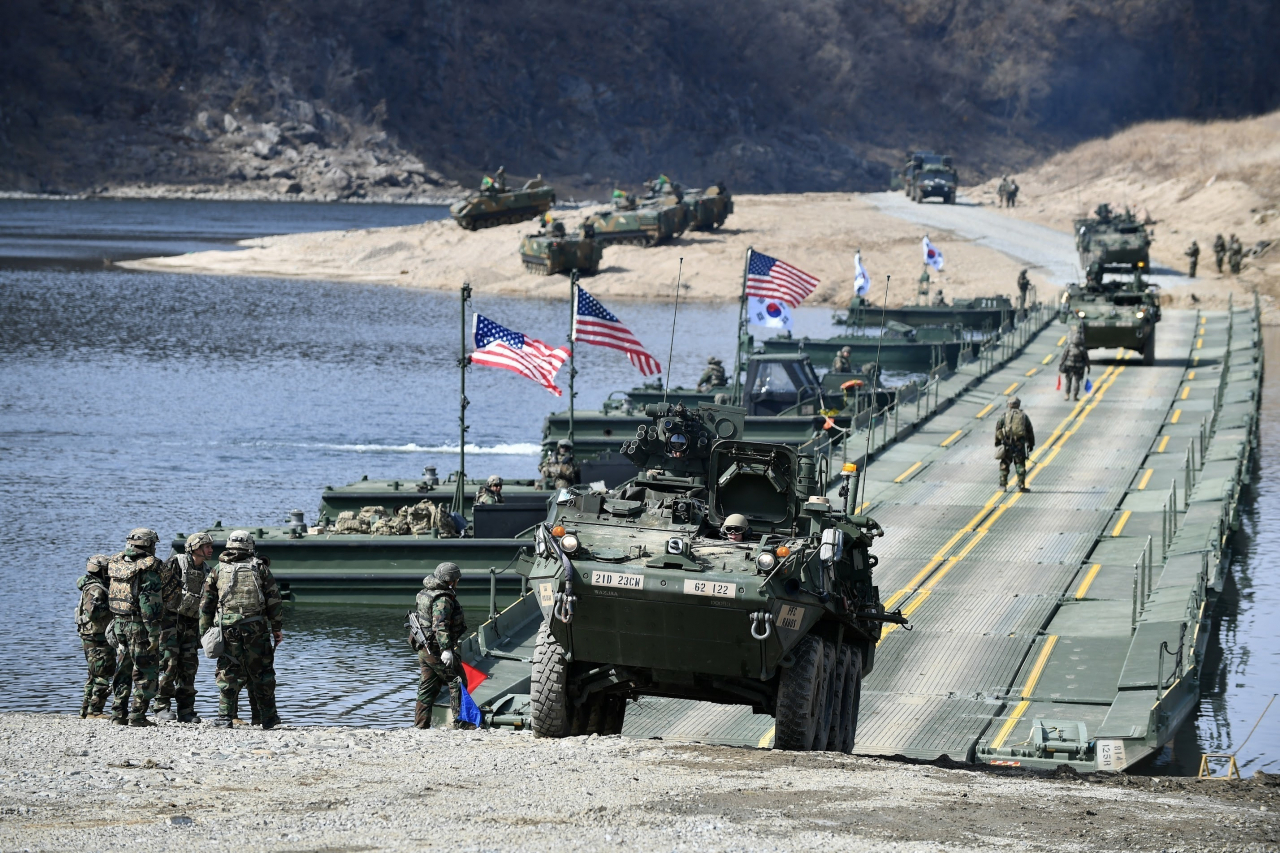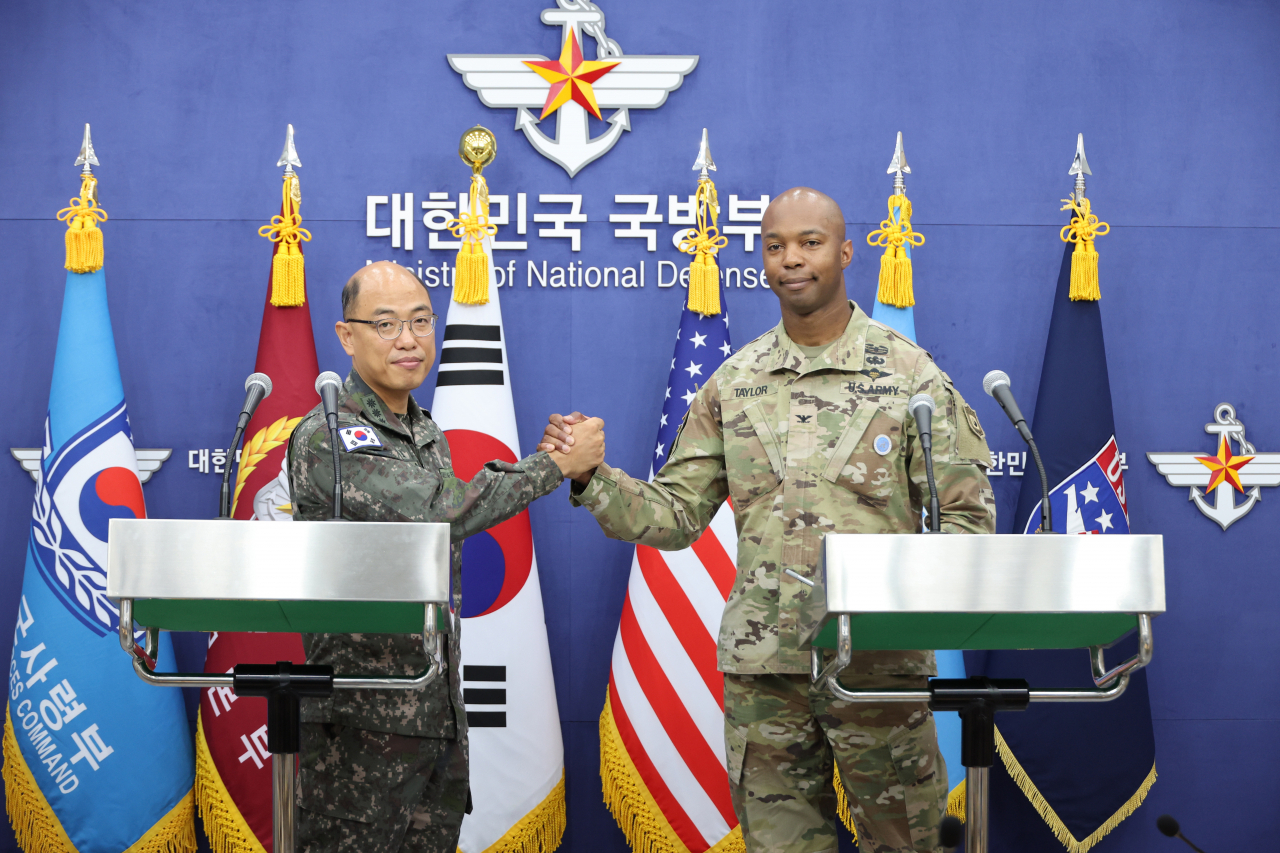S. Korea, US to stage ‘realistic, tough’ military exercise against NK threats
By Ji Da-gyumPublished : Aug. 14, 2023 - 15:35

South Korea and the United States are set to conduct "tough" yet defense-oriented military exercises simulating real-life scenarios, with the goal to strengthen the alliance's defense posture and ability to respond to the escalating missile and nuclear threats posed by North Korea.
The 11-day computer-simulated "Ulchi Freedom Shield" exercise is planned for Aug. 21-31, including a weekend pause on Aug. 26 and 27, South Korea's Joint Chiefs of Staff and US Forces Korea jointly announced Monday.
"Ulchi Freedom Shield 23 is designed to be a tough and realistic exercise to strengthen the combined defense posture and Alliance response capabilities based on scenarios that reflect diverse threats within the security environment and lessons learned from recent wars and conflicts," an English-language joint statement read.
The upcoming UFS exercise, for instance, will incorporate military training scenarios in light of North Korea's advancing nuclear and missile capabilities as well as its intentions regarding nuclear buildup and missile development.
The South Korean and US forces are set to stage around 30 field training exercises, or FTXs, associated with UFS 23, representing an uptick from the 25 outdoor maneuvers held during this year's springtime Freedom Shield/Warrior Shield combined military exercises. In the previous year's autumn UFS exercise, Seoul and Washington organized a total of 13 FTXs.
The upcoming FTXs, ranging from the platoon to brigade levels, are designed to "strengthen combined operational abilities" of South Korean and US forces, JCS spokesperson Col. Lee Sung-jun said in a televised news briefing in Seoul.
"The combined military training and exercises are vital to maintaining a robust combined defense posture for the security of the Republic of Korea in case of contingencies in response to mounting military threat posed by North Korea," Col. Lee said, adding that South Korea will mobilize its Army, Navy, Air Force and Marine Corps for the FTXs. Republic of Korea is the formal name for South Korea.
But the US did not disclose details regarding the potential deployment of US strategic assets linked to UFS 23.
USFK spokesperson Col. Isaac Taylor instead emphasized that the combined exercises will replicate feasible real-life scenarios that could unfold on the Korean Peninsula, reflecting insights gained from recent global conflicts and wars, including the protracted war in Ukraine.
"Those situations are things that we draw upon to not just make a scripted exercise where everyone already knows the answer to it, but really make a tough exercise," Col. Taylor said.
"What are the things that we're going to have to accommodate or work around to be able to return peace back to the Korean Peninsula if the armistice was to fail? What would ensure our ability to have success?"

Col. Taylor also emphasized a crucial aspect of the upcoming UFS exercise, highlighting the significance of guiding commanders to effectively execute multi-domain integration. This process aims to ensure that diverse components across space, land, air, sea, cyber and cognitive domains can seamlessly work together in the event of contingencies.
"If a situation was to arise here on the Korean Peninsula, how do you take all of those resources that commanders have at their fingertips and be able to utilize those effectively?" he said.
In this context of multi-domain integration, the significance of the involvement of the US Space Forces Korea, formally launched in December of last year, in the UFS exercise has been emphasized.
US Space Forces Korea primarily handles the operation of space-based assets, as well as the detection and tracking of missile launches. It also participated in the springtime Freedom Shield/Warrior Shield exercises held in March, marking the first instance.
Col. Taylor further elaborated that another goal of the UFS is to practice the seamless integration of all potential elements, including those from the forces of the UN Sending States, which could come into play on the Korean Peninsula when contingencies emerge.
The term "UN Sending States" refers to those nations that fought alongside South Korea under the US-led UN Command during the Korean War and have remained part of the UN Command since 1953.
But it's notable that Monday's joint statement explicitly includes UN Sending States in UFS 23, a significant first despite their previous participation in combined military drills.
"United Nations Members States are also scheduled to participate. Additionally, the Neutral Nations Supervisory Commission will observe and monitor the exercise fulfilling duties prescribed by the Armistice Agreement," according to the English statement.
In a separate standalone statement, the USFK also stated that "all United Nations Command Member States are scheduled to participate in different capacities, with 10 members providing additional exercise augmentees."
The 10 countries consist of Australia, Canada, France, Great Britain, Greece, Italy, New Zealand, the Philippines, Thailand and the US.
The joint announcement on the regular fall military exercises was made a day prior to the commencement of the four-day preliminary exercise, known as a Crisis Management Exercise, scheduled to start on Tuesday. The CMX is designed to train headquarters elements of South Korea's JCS, Combined Forces Command, USFK and UN Command become proficient in managing crisis situations, along with responding to significant threats to national security.
The announcement also coincided with ongoing bellicose rhetoric from North Korea. North Korean leader Kim Jong-un conducted a series of visits to the country's key munitions factories last week, where he highlighted the "highly significant role" of munitions factories in "further refining war readiness," state media reported Monday.
Kim's visits included factories responsible for manufacturing tactical missiles, tactical missile launch platforms, armored vehicles and large-caliber control multiple rocket launcher shells on Friday and Saturday. The recent tours occurred just six days after his rare three-day visits to other arms factories that extended until Aug. 5.
During the tour, Kim outlined an "important objective to significantly augment the existing missile production capacity," the state media said, adding the goal is to facilitate the mass production of missiles as necessitated by the expanded and fortified front-line and missile units, as well as operational plans.
Kim also underscored the need for the North Korean military to "maintain an overwhelmingly powerful military force and be fully ready to counter any potential war at any moment," ensuring annihilation in the event of an attack by enemies.



















